Review: Pantech Renue for AT&T
Aug 9, 2012, 11:32 AM by Eric M. Zeman
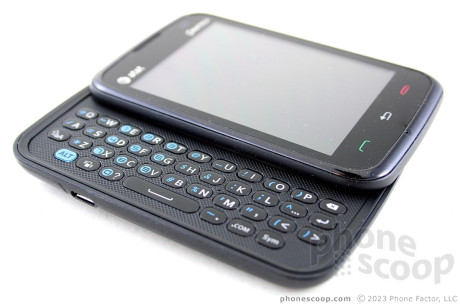
Pantech delivers another quick messaging device to AT&T. The Renue boasts a touch user interface and physical QWERTY keyboard for pecking out messages. See if it's worth a look in Phone Scoop's full review.
Form
Is It Your Type?
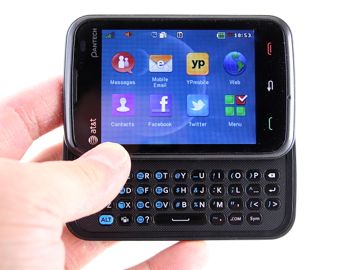
Not ready for a smartphone yet? No worries, Pantech has your back with the Renue. In addition to being environmentally friendly, the Renue bundles together a full QWERTY keyboard and a touch screen in this pocket-friendly quick messaging device.
Body
The Renue is a cute little thing, though it would be cuter if it came in some hip colors or designs. The Renue is the latest QMD (quick messaging device) from Pantech for AT&T, and hopes to bridge the divide between those who love touch screens, but also require a real, physical keyboard.
The Renue's footprint is pleasingly small. At 3.9 inches tall, it's perhaps two-thirds the height of today's standard bar phones and yet it still manages to avoid looking squat or awkwardly disproportionate. It's so thin and light that you might be surprised to learn it hides a slide-out keyboard.
The rounded side surfaces and the battery cover have a soft-touch finish, giving the Renue some much-needed grip. The battery cover, in particular, has a ribbed pattern to it that makes the Renue easy to keep hold of. The materials and build quality feel decent, but not fantastic. Most people won't be able to tell the Renue is made partially from recycled materials, but they'll certainly know it's no high-end smartphone. Its small size makes it an easy pocket companion, but the soft-touch finish is sticky enough that you might pull your jeans pocket inside out along with the Renue.
The front of the phone is mostly the touch display. There are three capacitive buttons below the screen, which offer Call, Back, and End functions. These buttons were responsive, but I would have liked them more if they offered haptic feedback. They don't. The left side of the phone holds only the microUSB port, and the right side holds only the volume toggle. The volume toggle has an excellent feel to it. It's easy to find and has pleasing travel and feedback. The same can be said of the lock button, which is on the top edge of the Renue. It's quite an excellent little button. The 3.5mm headset jack is also up top.
The slider mechanism is decent, but not the best I've used. In my experience, it's easier to open the Renue with one hand than it is with two. Since so there's little to the Renue, when you attempt to push the top half of the phone up with your two thumbs, it's easy to lose your grip on the phone. The mechanism is spring-assisted and pops open and shut with authority.
The Renue feels well balanced when held with the screen open. The overall shape was comfortable to use for typing messages and browse the web for extended periods of time without causing any hand fatigue. I wasn't super impressed with the keyboard. As is often the case with sideways sliders, Pantech had to keep the profile of the individual buttons to a minimum; they're a bit too flat. They travel of the keys is excellent, but the feedback is a bit cheap.
The keyboard has three rows for the letters and numbers, and a fourth row for the space bar and some function keys. The numbers keys require you to hit the ALT button, as there is no dedicated row for numbers. Some of the useful functions of the keyboard include a key that automatically sets the phone to vibrate, as well as dedicated ".com" and " ? " keys. The Renue also has three of the oddest key selections I've ever seen. There's a dedicated key for "…" and dedicated keys for the < and > angle brackets. Does Pantech expect that Renue users are going to be punching out HTML code from their phones? They don't even move the cursor around. Worse, the "@" symbol, which is a vital internet character, requires extra key presses to insert. At least Pantech included period and comma buttons.
The battery cover is one of the easiest to remove. It pops right off. You have to pull the battery to access both the SIM card and the microSD card. Of note, the Renue uses the newer, smaller micro SIM card (similar to the iPhone or HTC One X) and not a standard old SIM card. That means if you're coming from another feature phone, you're going to need to get a new SIM card.
The Three S's
Screen
The Renue is no smartphone, and nowhere is it more evident than the display. The Renue's display measures 3.2 inches across the diagonal and offers 240 x 320 pixels. If you haven't looked at a feature phone recently, you'll cringe when you see the jagged edges and big pixels on the Renue's low-res display. It is certainly bright, though, and is easily read both indoors and out. Colors looked good, too.
Signal
The Renue doesn't compare well to other AT&T phones when it comes to connecting to AT&T's network. It generally held fewer bars than other AT&T phones in side-by-side comparisons, and that directly impacted the Renue's performance. Connecting calls was hit-or-miss. I had about a 60% success ratio at connecting calls on the first attempt. The Renue was also pretty good at dropping calls, even when the signal strength indicator showed three or four bars. Not good, Pantech, not good. Text messages appeared to go through the network no matter what, but using apps such as Facebook was slow-going at best.
Sound
When I was able to connect calls, they sounded good. Clarity was short of excellent, but still acceptable. The earpiece delivers a blast wave of sound that might damage your hearing if you're not careful. Setting the volume to maximum and pressing it to your ear guarantees that you'll hear your phone calls, but you'll be in pain afterwards. The speakerphone isn't quite as good. In terms of quality, it is on par with the earpiece, but the volume is sadly lacking. Even set all the way up, it was hard to hear conversations in an office with an air conditioner running. Forgot about using it effectively in a car. I had no problem hearing the phone when it rang, or when it bleeped at incoming messages. The vibrate alert was not very alert-ful, however.
Battery
I often forget how awesome non-smartphones are when it comes to battery life. The Renue can easily power its way through three days of casual use. If you're making a few phone calls a day, sending several dozen text messages, and checking your social networks, you'll really enjoy the Renue's battery life. Turning on the Bluetooth radio sapped about a half-day's life from the battery, but otherwise it goes and goes and goes.
Basics
Menus
The Renue runs Brew MP, which is a feature phone platform developed by Qualcomm. It's fairly robust in terms of features, though the execution on the Renue is a bit lacking.
Like most smartphones, users are presented with a lock screen when they first wake the display. Swipe the little lock symbol to unlock it, or silence the device by sliding the ringer tool. Pantech also carried over some cool Android lock screen features that allow users to go straight to the phone, messaging, camera, or voicemail apps directly from the lock screen by sliding little symbols up and into a circle on the Renue's home screen. Cool!
The Renue has five home screen panels that can be customized with user content, such as bookmarks, contact shortcuts, photo galleries, and other similar content. There are four permanent icons at the bottom of the screen providing access to the phone, contacts, messages, and main menu.
These home screen panels are a bit wonky, though. The transitions are full of the jitters and stutters. There's almost always a delay between the time you touch the screen and the time it responds. With an anemic 400MHz processor under the hood, I am not surprised.
The main app menu is laid out in grids that can be accessed by swiping side-to-side. If you choose to download an app from the AT&T app store, it is added to a grid. The number of grids will expand as you add more apps. You can't control or customize the appearance of the main menu.
Navigating through the various menus takes about 60 seconds to get the hang of.
Calls/Contacts
Calls
The fastest way to make a phone call is to start with the lockscreen shortcut and launch the phone app. Doing so brings you to the dialer, where you can easily access your contacts and speed dials. Alternately, adding contact shortcuts to the home screen panels is a cinch.
The phone app also provides tools such as a list of recent calls (made, received, missed), and the ability to see most-dialed numbers. As with Android, if you tap the number of a missed call, you open the call log where you have the option to send a message, make a call, add it to the contacts app, and so on. If you tap the little green symbol next to the number in the call log, it automatically calls the number.
Contacts
Each contact holds a pretty decent amount of information, including a handful of phone numbers and email addresses, street address, notes, and so on. AT&T will automatically populate the phone with your contacts if you use the AT&T back-up service (which is free).
When viewing a contact, the app's tools make it a breeze to call them, text, them, see their address on a map, and so on.
Messaging
Are, here we are, the crux of this review. After all, the Renue is a quick messaging device, right? Right.
The SMS app is about what you'd expect to see on a low-cost feature phone. The tools are bare bones, but at least there are several modes to the keyboard (predictive software assistance, no software assistance, etc.) and inserting media of any sort is a snap. There are nine pre-loaded messaging templates, but they can be edited at will. The composition screen shows you how many characters you're typing, and messages are threaded into conversations.
How AT&T treats email on feature phones is ridiculous. It's not free. In order to get email on the Renue, you have to pay $5 extra per month. Considering the Renue's chief function is to do things like, I dunno, send texts and emails, that's pretty lame of AT&T. The email client itself is clunky and generic. It is passable for basic email retrieval and such, but it won't suffice for power emailers.
Twitter and Facebook are on board, but offer a limited experience at best. Rather than full apps, the Renue includes links to the two social networks' mobile web sites. Sure, it's easy to send Tweets, set your Facebook status, and respond to the posts of others, but full apps would be better. You can download a Java version of Facebook, which allows you to respond to Facebook emails, accept friend requests, see your calendar and other features, but it takes some work to find and use.
Instant Messaging? Absent. What the what?
Taken as a whole, I am pretty disappointed with this messaging device's messaging features. I was expecting a more robust set of tools, especially given the Brew MP backbone supporting the user experience.
Extras
Media
Music
The Renue has a simple music playback app. It can play music that's been sideloaded to a microSD card, as well as music purchased through AT&T's horrendous Music Store. The music player lets users sort by song, artist, album, and genre, and, surprisingly, includes a 6-band user-adjustable equalizer. Music playback through my favorite earbuds was surprisingly robust. There's also a little widget that pops up on the home screens when you have music playing so you can control the player when doing other things.
So why do I dislike the AT&T Music Shop? Because it's all based on AT&T's browser-run content store. Navigating the content store is a nightmare and a half. Everything requires page refreshes, and purchasing tracks takes at least five steps, which is three too many. Throw in uncompetitive pricing ($1.99 - $2.99 per track, REALLY???), and you have a worthless piece of software.
Video
Pretty much the same thing goes for the on-board video player app. It's as basic as they get, and is really only good at playing back video content captured on the device itself. It only saw about half the video content I sideloaded onto a microSD card (i.e. anything with DRM attached won't work).
The Renue doesn't have a video store on board, not from AT&T, not from Pantech.
Camera
Camera
The Renue's camera software is surprisingly smartphone-esque. Clearly Pantech drew from its experience with Android when it designed the software. What does that mean? The camera controls are a bit more robust than what's available on most other feature phones.
The base viewfinder offers a focusing box in the center of the screen and a software camera button on the right side. (Sidenote: Why not include a dedicated camera button? There isn't even one on the keyboard, which is doubly wrong of Pantech.) Tap the screen, and a set of controls appear for making adjustments to the camera. On the left, there's a strip of icons that grant access zoom and brightness sliders, as well as fine-tuning items such as white balance, effects, resolution, timer, geotagging, and so on.
You can jump to the video camera or gallery by pressing buttons that appear next to the shutter button.
When you're ready to shoot images, just press the shutter button. There's no autofocus and no flash. Even so, the camera takes forever to snap the shot. Then you're stuck looking at a review screen before you can go back to the camera to take another shot. The review screen offers tools for sharing via MMS or Bluetooth (but not email, nor social networks); set the photos as a wallpaper or contact photo; or trash it, geo-tag it, or head to the full gallery.
Gallery
The gallery offers either grid or list views of the images contained therein. The Renue separates preloaded images from those you capture yourself, and you can organize them into folders if you wish. You can also choose to see just the items stored on the internal memory, or those stored on a microSD card.
Options in the gallery are severely limited. You can zoom in, set as wallpapers or contacts, send via Bluetooth or MMS, rename the file, or delete it. There are no editing functions whatsoever. The zoom tool is about as clunky a mechanism as I've ever seen on a phone. Rather than allow Renue owners to use the now-familiar pinch-to-zoom action, the zoom tool offers a slider that you drag up and down to zoom in and out. Accompanying the slider is a thumbnail view of the entire picture, and a box that shows you the section that's blown up. It really looks awful.
Photos/Video
Photos
They're not that great. With a relatively ho-hum 3.2-megapixel sensor and no autofocus, I wasn't expecting much and the Renue met my low expectations.
Focus is very soft, exposure was mostly OK, and white balance/color worked itself out most of the time, but the grain is insane. It's like the pictures have been painted on sand. They might be worth an MMS every now and then, but you're not going to be framing these images or showing them off anywhere.
Video
Ditto for video. The Renue shoots video at a maximum resolution of QVGA (240 x 320). It's cruddy at best. The soft focus and grain make it almost unwatchable.

3GPP / MPEG-4 format (viewable with QuickTime)
Browse/Customize
Browser
The Renue's browser works, but just barely. Everything about it is slow and frustrating. It will display WAP and HTML pages, but rendering them takes a year and a day. (The Renue is capable of max speeds of 3.6Mbps, which means real-world speeds are just over 1Mbps. This thing doesn't even have faux-G, let alone 4G.) The base AT&T-branded bookmarks are littered with traps that lead to accidental content purchases, like wallpapers or ringtones. Don't fall for them. Set your own bookmarks and type in your own URLs and you'll be fine.
Customize
The Renue lets you customize select aspects of the device, such as wallpapers, ringtones and such. Being able to put app/contact shortcuts on the home screens is a nice touch. I wish you could do more with the main menu, but the Renue offers a handful of ringer profiles (normal, outdoor, silent, etc.).
Extras
Apps
There is an app store on the Renue and it's run by AT&T. It offers an odd assortment of games, entertainment, weather/news, sports, and so on. The selection is limited and you won't find recognizable apps such as Evernote or Fandango. Prices range from free to $4.99.
Bluetooth
The Renue supports the typical set of Bluetooth files, including stereo Bluetooth and support for mono headsets and cars. It connected to everything just fine. Phone calls placed through mono headsets were OK, not great. Music sounded decent through stereo Bluetooth speakers, but not awesome. I was able to push files between devices easily, as well.
Clock
The lock screen clock can't be changed. It's a sizable digital clock placed right in the center of the display. As long as you have a dark-ish wallpaper, it can easily be read. If you put a lighter picture like Mount Everest on there, you won't see it all that well, especially outdoors. The central home screen panel hosts a clock as well, and that one can be switched around to about a dozen different options.
GPS
The Renue includes AT&T's capable Navigator app. It costs $10 to use but is a solid choice for point-to-point directions.
Wrap-Up
The Pantech Renue is an interesting little phone. It doesn't offer all that I expected from a quick messaging device. Notable absences include instant messaging (though perhaps Facebook messaging and Twitter DMs makes up for that) and free email. These seem like table stakes to me.
The hardware itself is good. It's a perfectly usable little device that is easy to carry about. The Android-esque user interface will be pleasing to some, no doubt, but once you get past the flashy home screen panels, the feature phone core of the Renue is painfully obvious.
Basic performance is mixed, and this concerns me. Though most phone calls sounded good, it was difficult to make them thanks to iffy signal performance. The slow data speeds were another downer, but battery life was awesome.
In the end, if you don't care much about extra features and simply want a solid little SMS/MMS device, the Renue gets the job done. Ask it to do much more than that, and it balks.
Comments
No messages


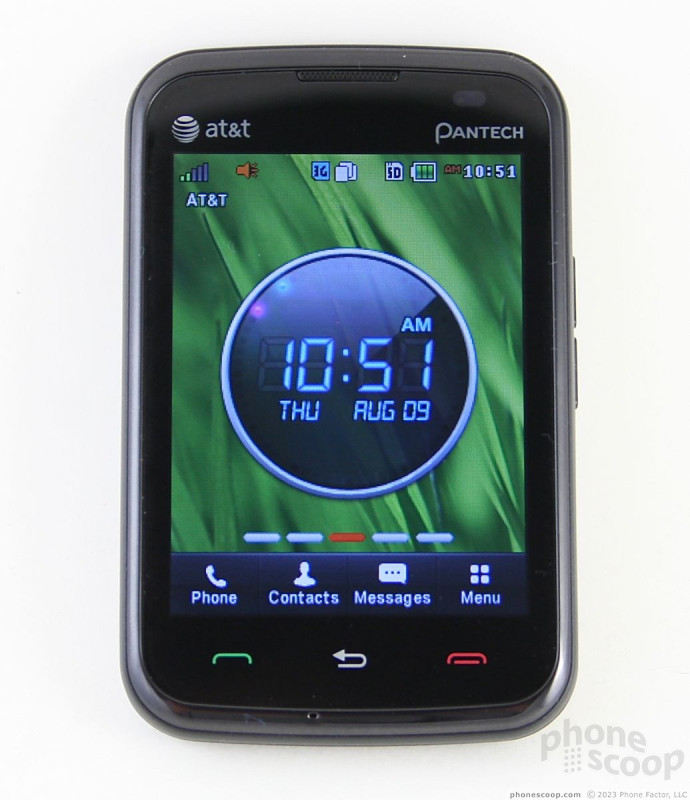














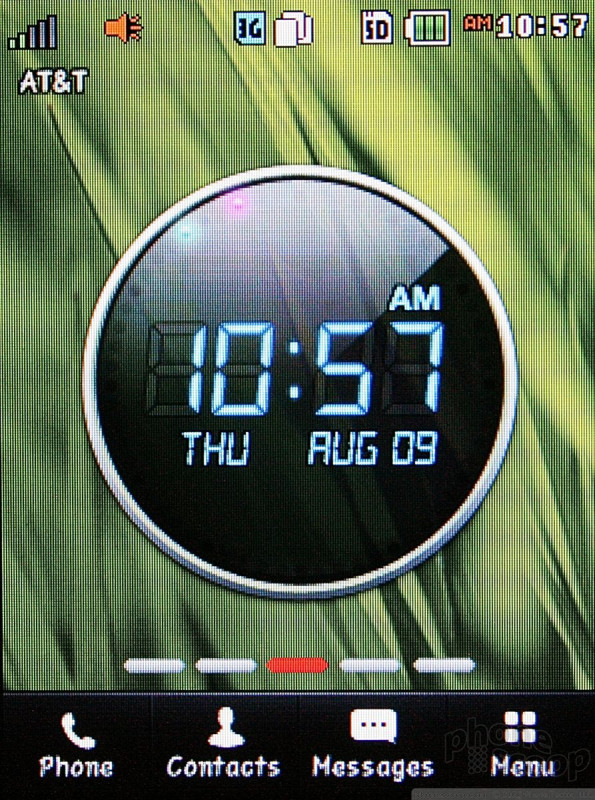





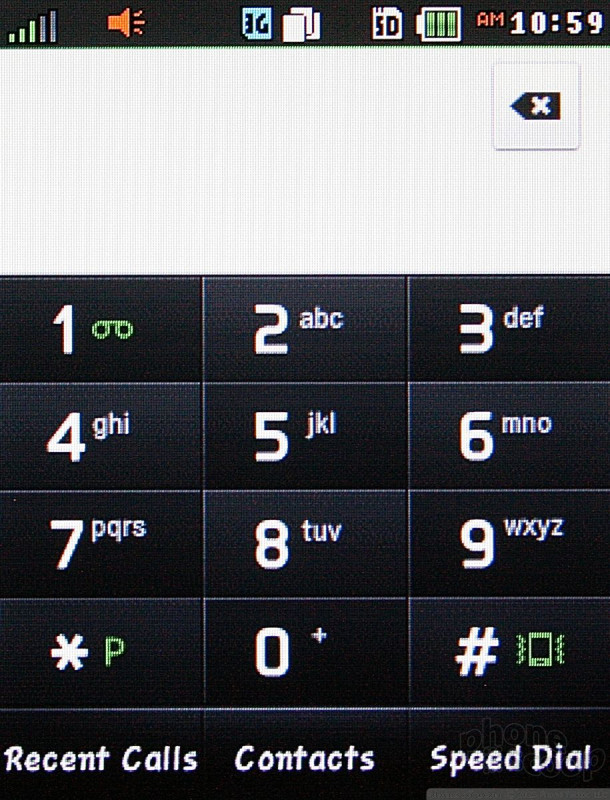



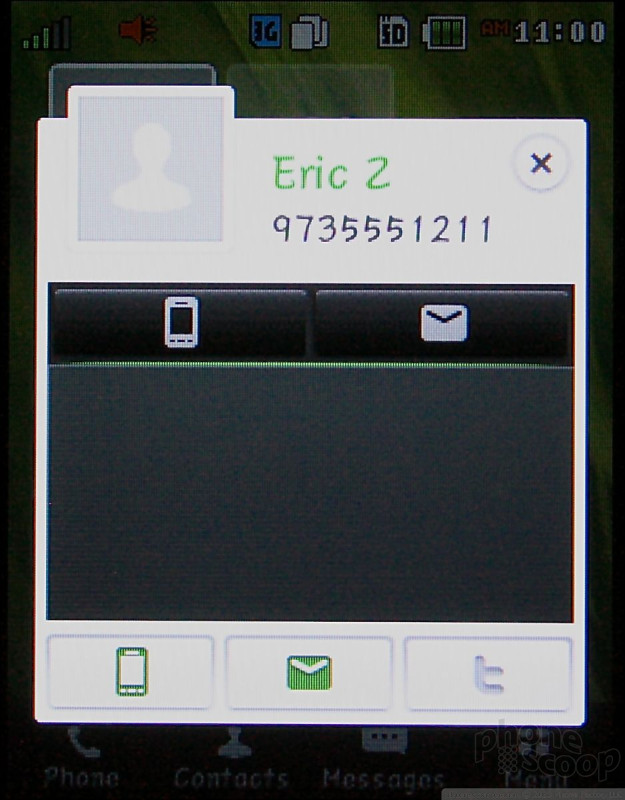




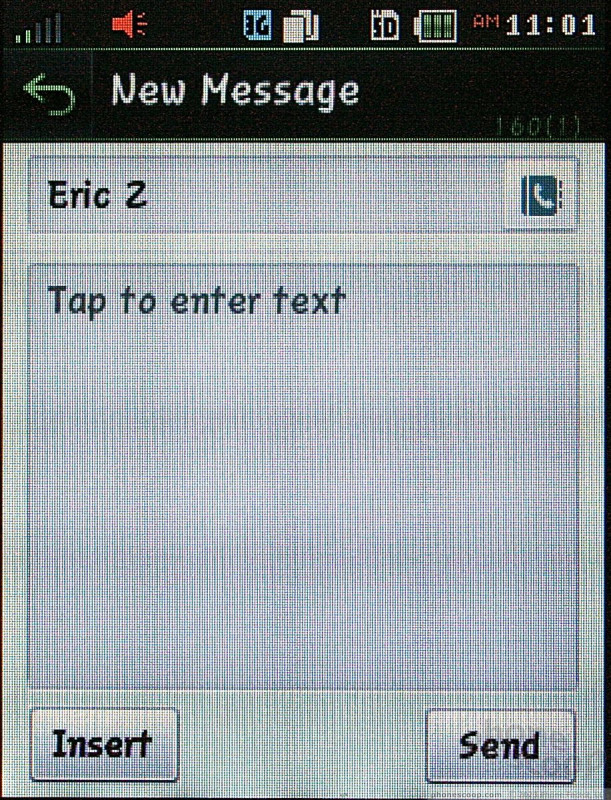



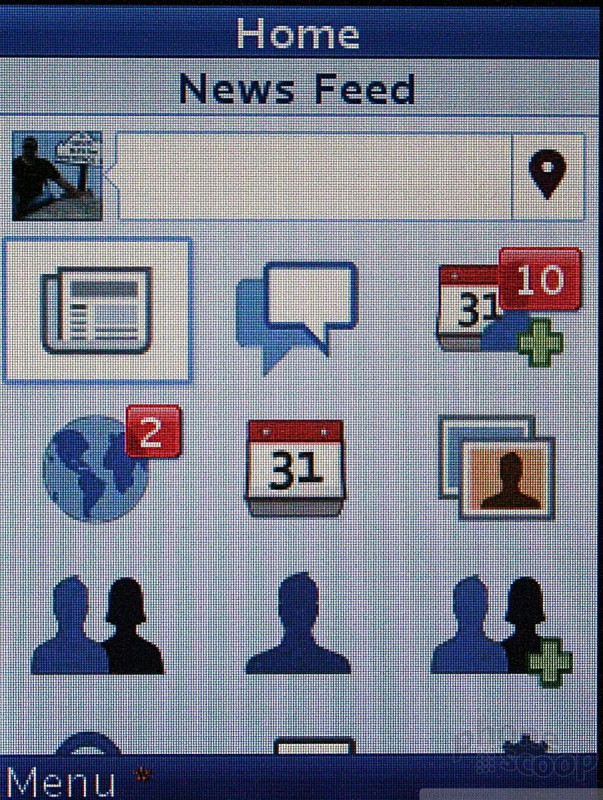





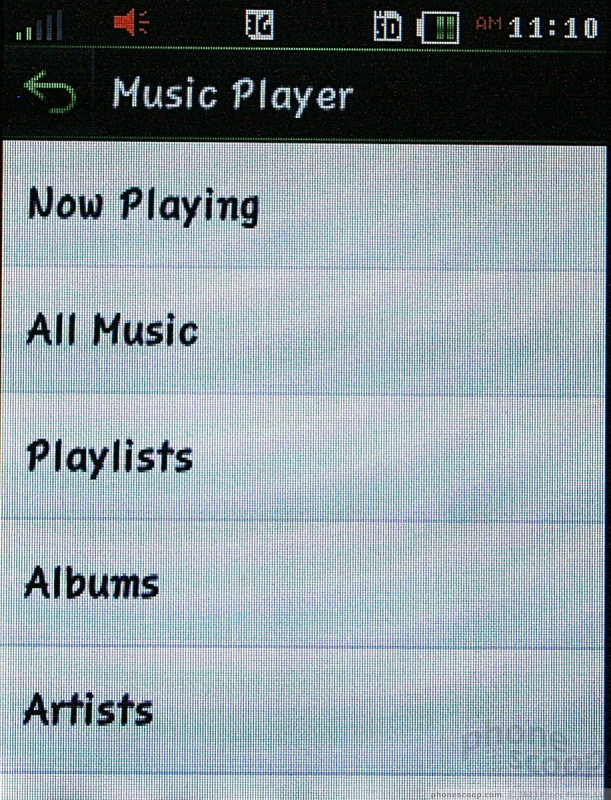



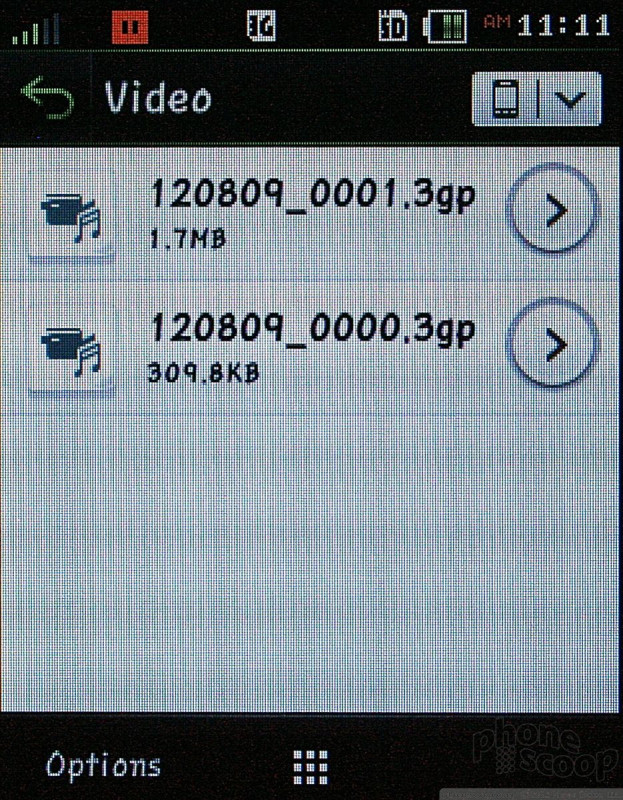


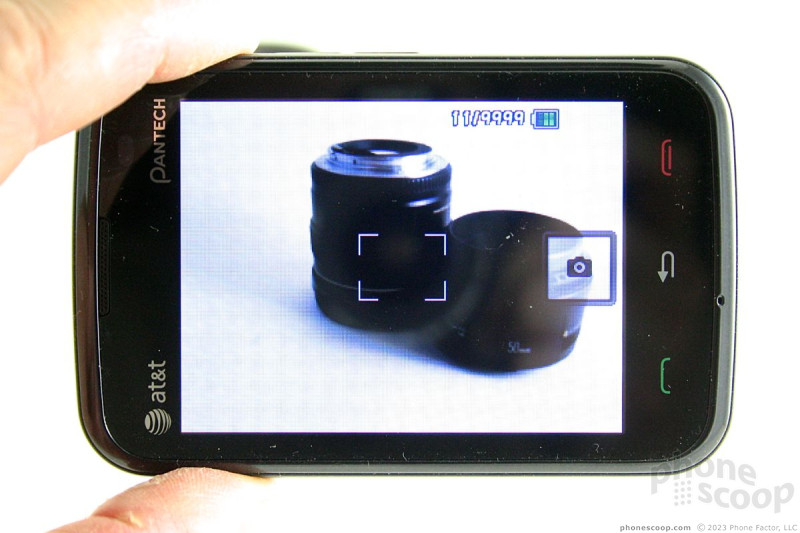



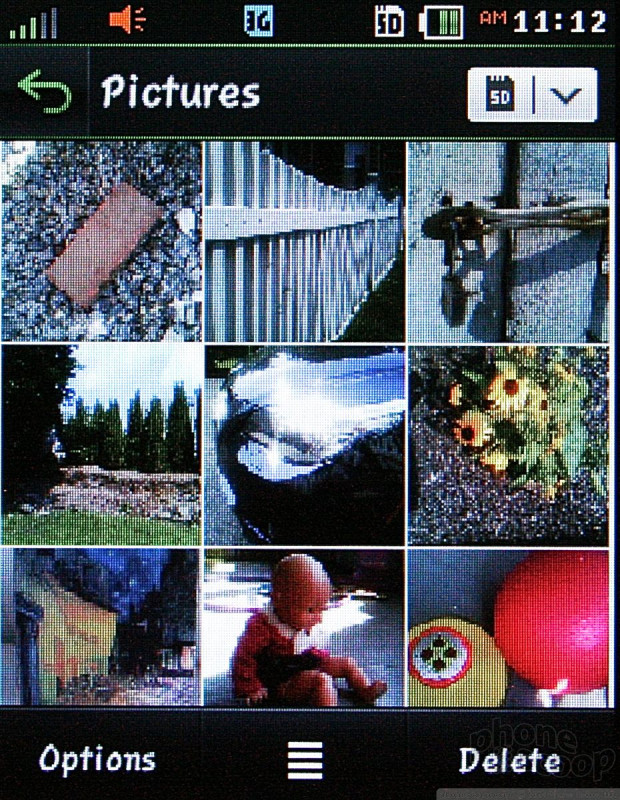




















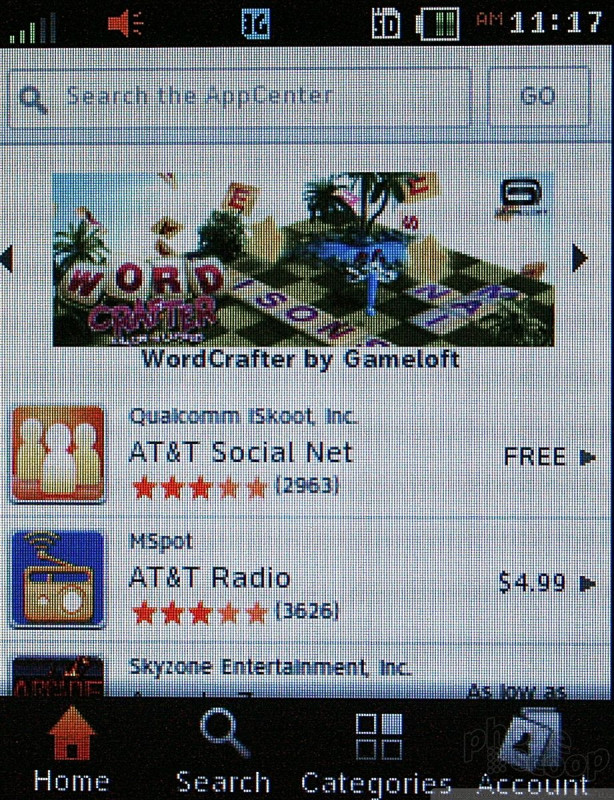



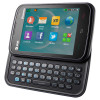 New Pantech QMD Both Rugged And Green
New Pantech QMD Both Rugged And Green
 Google Bringing Generative AI to Android Messages, Wallpaper
Google Bringing Generative AI to Android Messages, Wallpaper
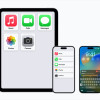 Apple Previews Major New Accessibility Features for iOS
Apple Previews Major New Accessibility Features for iOS
 Motorola Defy Satellite Link Now on Sale
Motorola Defy Satellite Link Now on Sale
 Google Adds Profiles, Animations, and Color Choices to Messages
Google Adds Profiles, Animations, and Color Choices to Messages
 Pantech Renue
Pantech Renue









